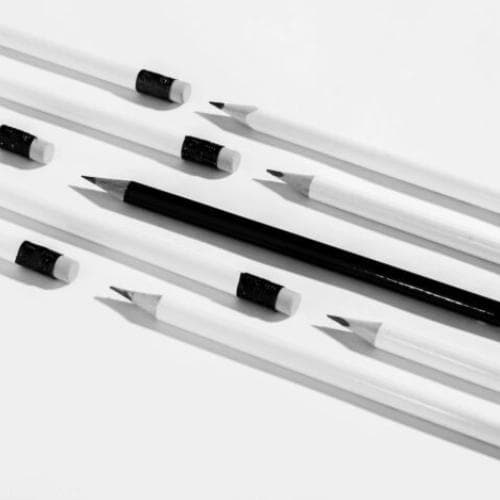Forever Safeguarding Ambition.

Sale of a Business
A business owner grew his small trucking company into a large logistics operation. Being the only shareholder, the owner needed a way to claim additional tax exemptions when it came time to sell the company.
- $9.25MSALE PRICE
- $1ADJUSTED COST BASIS OF COMPANY SHARES
- $1.07MAMOUNT SAVED
“I knew I could claim a tax exemption by selling shares of my company, but when Jiwan Dhillon & Company claimed exemption for three additional family members, that’s when the real savings happened.”
BC LOGISTICS COMPANYCorporate Reorganization
Two partners owned a hotel business, seeking to plan its sale. Due to the business structure and assets pre-reorganization, a share sale wouldn't qualify for the Lifetime Capital Gains Exemption. Additionally, 1M of excess cash would have to be taxed if taken out of the company.
- $5.5MSALE PRICE
- $1ADJUSTED COST BASE FOR TAX PURPOSES
- $1.2MAMOUNT SAVED
"We executed a brilliant corporate reorganization. This saved our family $1.2M by securing my parent's lifetime capital gains exemption, and funded my dream venture. Their guidance bridged generations, ensuring innovation thrives. Grateful for the transformation!"
M. SAHOTACrystallization of CGE
A family gas station business, previously active, plans to lease the land and business assets. This would result in the income becoming passive income which jeopardizes the corporation’s Lifetime Capital Gains Exemption.
- $2.5MFAIR MARKET VALUE OF ASSETS
- $1ADJUSTED COST BASE FOR TAX PURPOSES
- $514,730MINIMUM AMOUNT SAVED IN THE FUTURE
"Sukhanoop's guidance in crystallizing capital gains exemption was tremendously helpful. We were able to claim LCGE before leasing the property. Leasing my property was a strategic move for headache-free profit."
G. BINNINGCapital Planning
An expanding development company faced lender resistance due to changing processes and financial forecasting. Traditional funding was declined, pushing higher interest rates and outrageous fees in secondary markets.
- $20MFINANCING ACQUIRED
- 5.25%INTEREST RATE REDUCTION
- $400,000LENDING FEES SAVED
"JD's expertise transformed my development portfolio. With their guidance, we now meet higher accounting standards, securing a substantial loan at a competitive rate without any lender fees."
BC PROPERTY DEVELOPERFarm Property Planning
Four partners own three farms which began to generate profits. Each partner has a steady income, which makes the farm's profit taxable at the highest marginal tax rate.
- 42.5%TAX RATE CHANGE (NOW 11% BRACKET)
- $415,055YEARLY AMOUNT SAVED
- $1.07MTAX SAVINGS AT SALE OF FARMS
“If we didn’t have proper planning in place, our farms would simply be a tax burden because of our steady incomes. Because of the firm's effective planning, we have additional capital for future ventures and a tax-free pipeline from our new corporation.”
K. JOHALHR Planning
An expanding logistics firm struggled to hire capable team members, impacting client service quality. Previously, several strategies were attempted to no avail.
- 32TEAM MEMBERS HIRED
- $289,761AVG REVENUE GENERATED PER HIRE
- 6NEW CONTRACTS ACQUIRED
"We overcame poor leads and unskilled staff. Now, with quality employees, structured training, performance reviews, and incentives, our logistics company is at a completely different level."
BC LOGISTICS COMPANYSale of a Rental Property
A business owner purchases a rental property in Kelowna. Three years after purchasing the property, he decided to move in. Five years later, he sold the property. Typically, the appreciation from the time of purchase to the time of moving in is taxable.
- $750,000SALE PRICE
- $415,055ADJUSTED COST BASE FOR TAX PURPOSES
- $334,945PROPERTY APPRECIATION
- $89,598TAX SAVINGS
“The property mainly appreciated in value while it was a rental. My family saved almost ninety grand because Jiwan Dhillon & Company knew how to structure the entire transaction as a tax-free sale.”
M. SINGHPost Mortem Planning
A late single business owner's three children seek to liquidate his assets for their shares. Without tax planning, this may lead to double taxation upon inheriting shares and liquidation.
- $3.76MFAIR MARKET VALUE OF BUSINESS ASSETS
- $1AJDUSTED COST BASE FOR TAX PURPOSES
- $1.84MAMOUNT SAVED
Moving Expenses
A business owner is moving to Vancouver from Nanaimo to start a new business. Such a move typically involves expenses such as travel, the cost of selling, and the cost of purchasing.
- $64,683TOTAL MOVING EXPENSES
- $145,000TOTAL INCOME AFTER MOVE
- $24,666AMOUNT SAVED
“I had no idea that the cost of selling and maintaining your hold house as well as property transfer taxes are deductible as moving expenses. Because Sukhanoop took the time to dig under the numbers and receipts, we realized the savings were over $24,000.”
A. MAHALForeign Income Tax
An individual has multiple streams of foreign income including rental, business, and pension.
- $74,362TOTAL FOREIGN INCOME
- $31,434AMOUNT SAVED
“In my experience, foreign income tax planning is an obscure topic for many accountants outside of the big four. Luckily, I came to know of Alka’s insight into the topic, which saved me over $30k on my multiple streams of international income.”
T1 CLIENTConsulting

Taxation

Accounting

Assurance

Jiwan Dhillon & Company

Sukhanoop Dhillon CPA
Principal

Alka Gupta
Accountant

Ruby Dhillon CPA
Accountant

Parmvir Singh
Accountant

Ramanpreet Dhillon
Accountant

Harpinder Aujla
Accountant

Inderpreet Gahir
Office Associate

Jasmine Pooni CPA
Accountant




